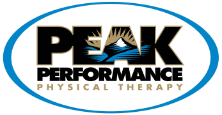The labrum is an important cartilage ring that promotes stability and shock absorption in the shoulders and hips. It is attached to the outer rim of the shoulder socket and helps keep the ball of the shoulder in place. The labrum performs that same function in the hip socket. When it gets torn the damage is referred to as a labral tear. In some cases, a labral tear occurs as the result of an injury, but it may also develop over time due to the aging process. In addition, labral tears are often hard to diagnose and typically require an MRI to be properly detected.
The symptoms of a shoulder labral tear include:
- Pain at the top of the shoulder
- Pain deep inside the shoulder
- An increase in pain when the arm is turned inward
- Pain that worsens when the arm moves from a backward to forward position
- Pressing on the shoulder does not worsen the pain as it originates from deep inside
If a person is suffering from a hip labral tear, the following symptoms may occur:
- A limited range of motion or stiffness in the hip
- A clicking, catching, or locking sensation in the hip
- Pain that worsens with prolonged walking or sitting
- A sharp, stabbing pain in the groin or hip while squatting
- Weakness in the muscles that surround the hip
- Feeling as if something is preventing hip movement or is stuck in the hip joint
 Pain in the groin or hip can often be described through a C-sign, in which an individual makes a C shape with the hand and places it on the hip to demonstrate the location of the pain. Although the symptoms for a shoulder or hip labral tear are quite different, the diagnostic procedure for each type of tear is the same.
Pain in the groin or hip can often be described through a C-sign, in which an individual makes a C shape with the hand and places it on the hip to demonstrate the location of the pain. Although the symptoms for a shoulder or hip labral tear are quite different, the diagnostic procedure for each type of tear is the same.
While a clinician may order an X-ray to identify potential bones issues (e.g., abnormalities, fractures) that may be contributing to the pain, an MRI is required for an accurate labral tear diagnosis.
It is important to note that imaging is not required to start your recovery. Many individuals have labral tears without having any symptoms and most individuals with a labral tear will recover with conservative care like physical therapy. Imaging is important if recovery is slower than expected or function is not improving and therefore surgery is being considered.
If on assessment, a primary care practitioner (family doctor, physical therapist, sports physician, etc.) suspects a labral tear, people with mild to moderate pain may start rehabilitation with a physical therapist who will assess the strength, mobility, and function, of the affected joint. The comprehensive assessment will entail a thorough history of the mechanism of injury, a physical examination of the joint if tolerated, and some specific tests to determine how well the joint can tolerate loads. Furthermore, a physical therapist will evaluate your posture, daily activities, sports regimens, or work-related tasks that may be aggravating the tear in order to suggest activity modification that will improve the symptoms and provide pain relief.
Rehabilitation will continue until function is maximized and/or the individual can safely return to their desired work and leisure activities. If the discomfort and dysfunction persists despite rehabilitation efforts, surgery may be recommended to repair the tear, but this is typically the last treatment approach, and is only suggested if the pain continues or worsens over time.
If you begin to experience any of the symptoms that have been described, it is important to see a physical therapist early on as this improves the therapeutic outcomes and can also prevent additional tearing of the labrum. The physical therapists at Peak Performance Physical Therapy are well-trained and can provide a comprehensive assessment of your joint mobility. The team of experts at Peak Performance Physical Therapy can also design a plan that is specifically tailored to your needs, as well as demonstrate the best movements that will promote healing and prevent a similar injury from occurring again. Speak with one of our physical therapists today.
References
1. Grace T, Samaan MA, et al. Correlation of patient symptoms with labral and articular cartilage damage in femoroacetabular impingement. Orthop J Sports Med. 2018;6(6):2325967118778785.
2. Magee T. How often do surgeons intervene on shoulder labral lesions detected at MR examination? A retrospective review of MR examinations correlated with arthroscopy. Br J Radiol. 2014;87(1038):20130736.
3. Izumida H, Kanaji A1, Nishiwaki T, et al. Acetabular labral tear complicating idiopathic osteonecrosis of the femoral head treated by labral repair with hip arthroscopy: a case report. J Med Case Rep. 2014;8:372.
4. Liem BC, Loveless MS, Apple EL, Krabak BJ. Nonoperative management of acetabular labral tear in a skeletally immature figure skater. PM R. 2014;6(10):951-5.
5. Yoo JH, Hwang JH, et al. Management of traumatic labral tear in acetabular fractures with posterior wall component. Orthop Traumatol Surg Res. 2014;100(2):187-92.
